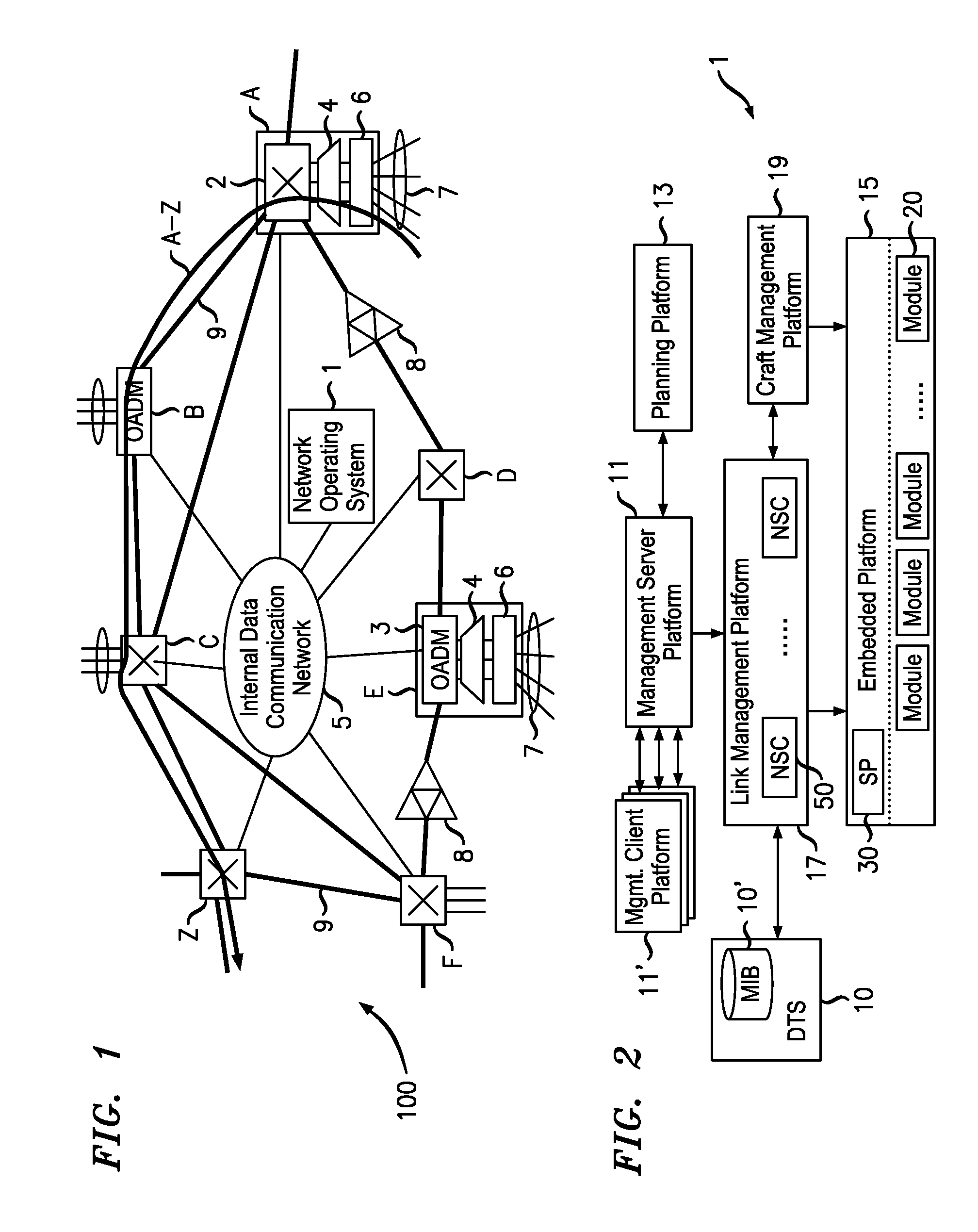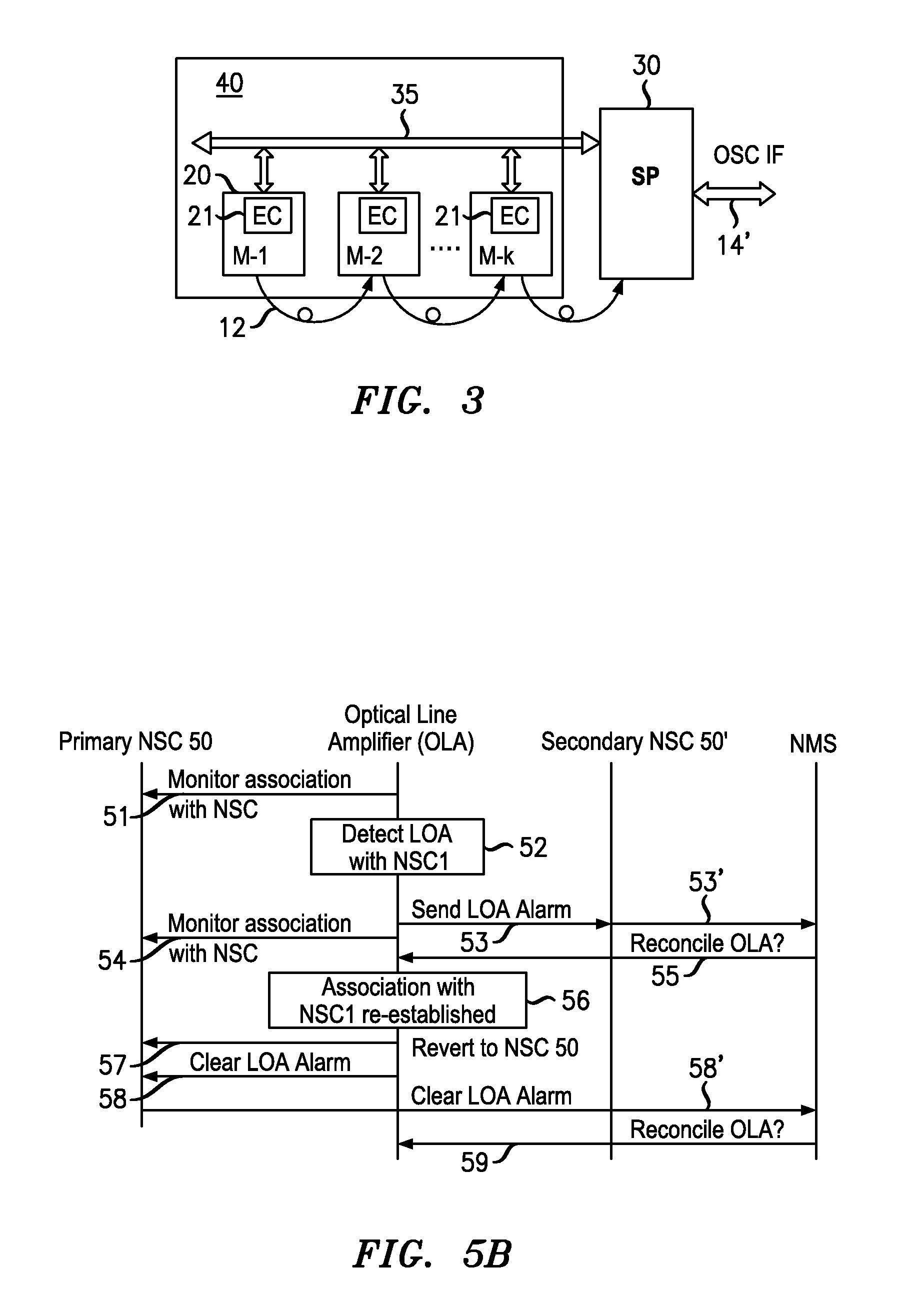Network Operating System With Topology Autodiscovery
a network operating system and topology autodiscovery technology, applied in the field of optical telecommunication networks, can solve the problems of affecting the service life of the network, and allowing fairly limited optical layer service offerings, so as to reduce the provisioning time of the servi
- Summary
- Abstract
- Description
- Claims
- Application Information
AI Technical Summary
Benefits of technology
Problems solved by technology
Method used
Image
Examples
Embodiment Construction
[0036]Definitions
[0037]The term “agile optical network”, (also referred to as ‘photonic network’, ‘all optical network’, ‘automatically switched optical network ASON’, or ‘wavelength switched network’) refers to a network where an end-to-end connection is established along a trail, the traffic being automatically switched at all or some intermediate nodes in optical format. The nodes of an agile optical network could be optical add / drop multiplexing (OADM) nodes that provide add, drop and optical passthrough, or could be optical cross-connect nodes that provide add, drop and optical switching of the passthrough traffic.
[0038]FIG. 1 illustrates an example of an agile optical network 100.
[0039]In the example of FIG. 1, network 100 comprises nodes A, B, C, Z, D, E, F, which are also called flexibility sites, connected by bidirectional fiber links 9. Optical switching nodes, such as node A, C, Z, F, D, comprise an optical switch 2 that provides optical switching of the passthrough traff...
PUM
 Login to View More
Login to View More Abstract
Description
Claims
Application Information
 Login to View More
Login to View More - R&D
- Intellectual Property
- Life Sciences
- Materials
- Tech Scout
- Unparalleled Data Quality
- Higher Quality Content
- 60% Fewer Hallucinations
Browse by: Latest US Patents, China's latest patents, Technical Efficacy Thesaurus, Application Domain, Technology Topic, Popular Technical Reports.
© 2025 PatSnap. All rights reserved.Legal|Privacy policy|Modern Slavery Act Transparency Statement|Sitemap|About US| Contact US: help@patsnap.com



